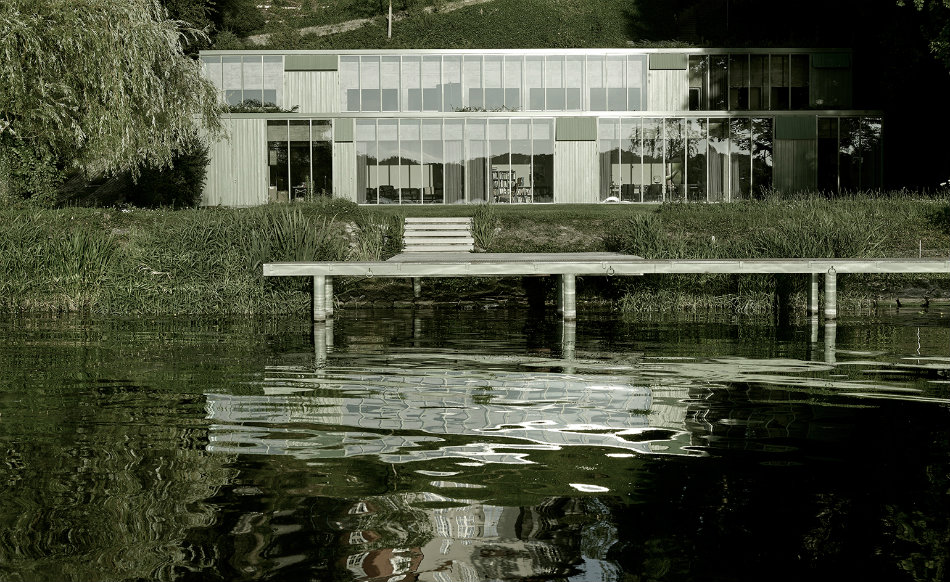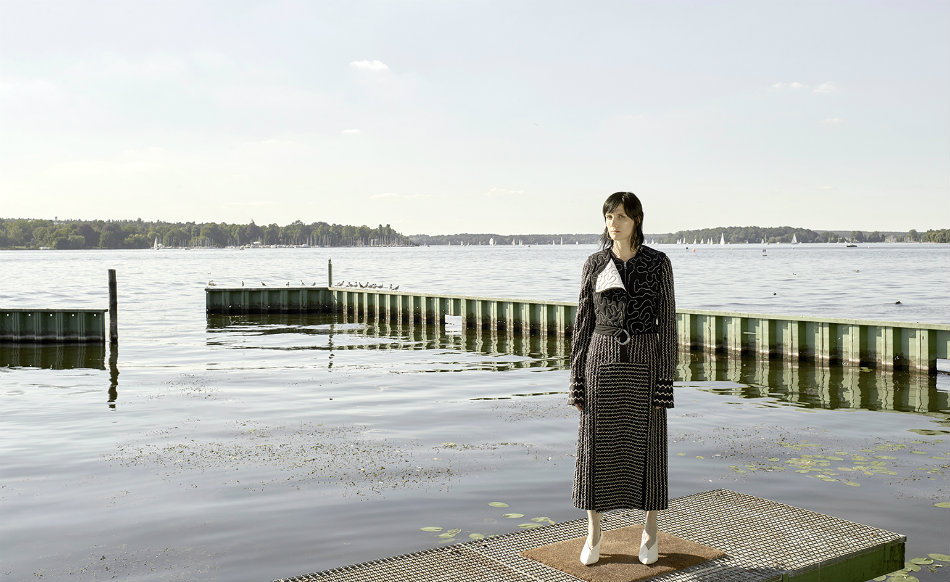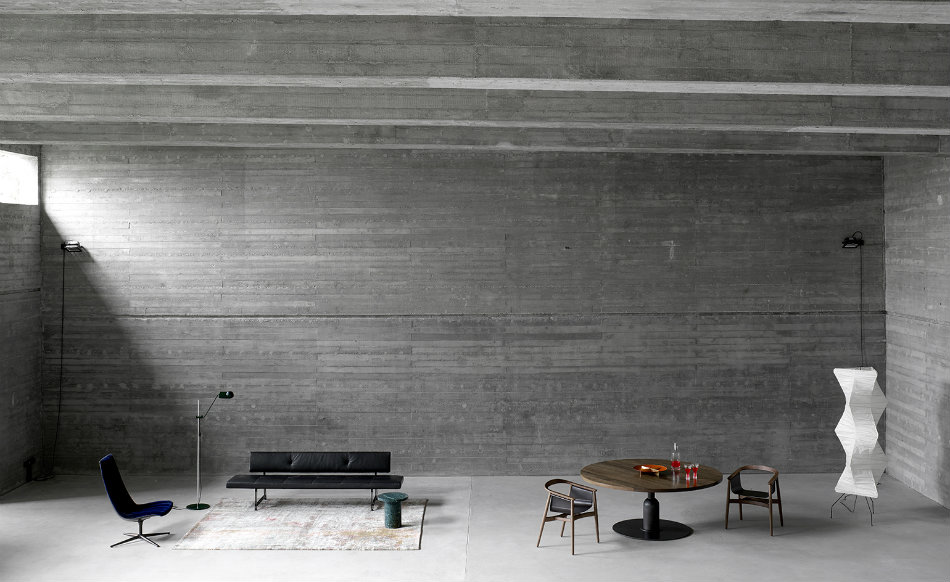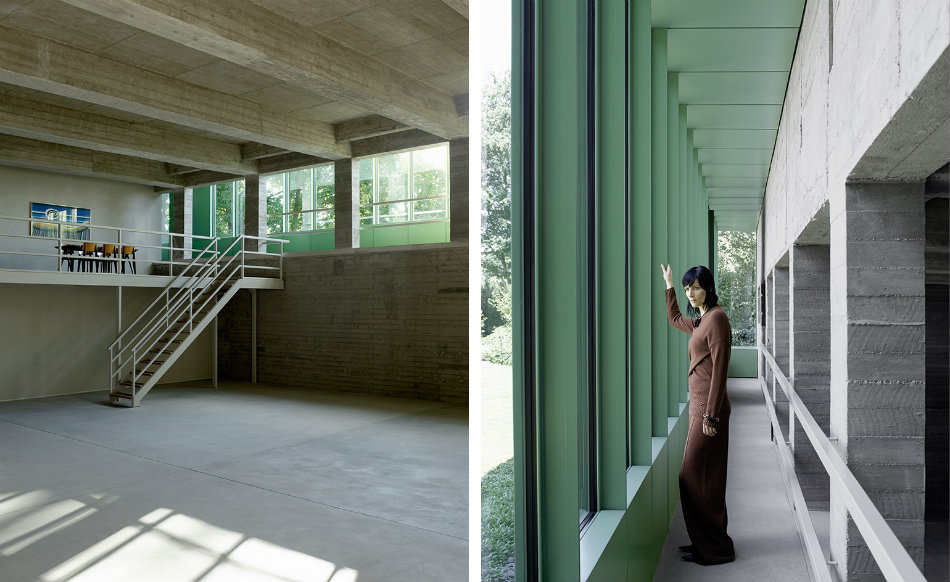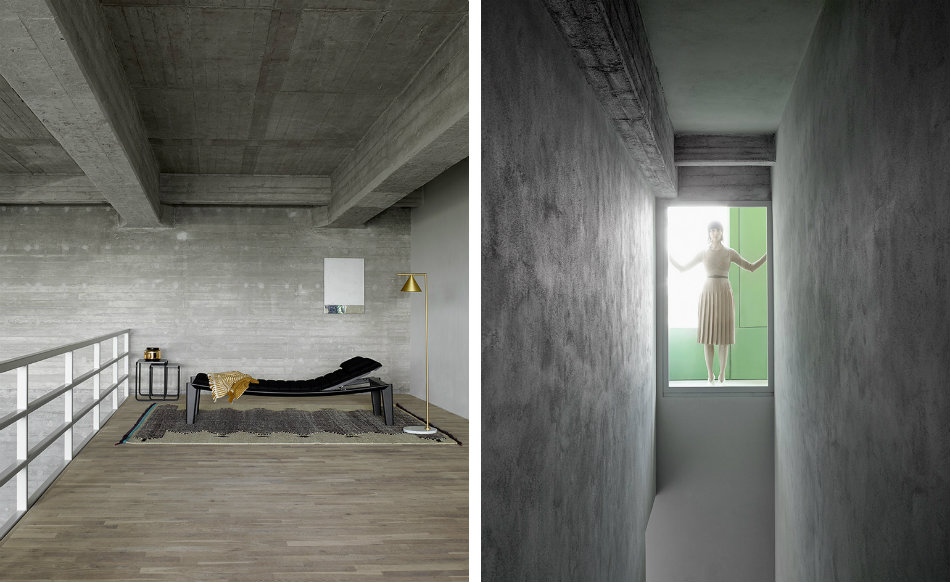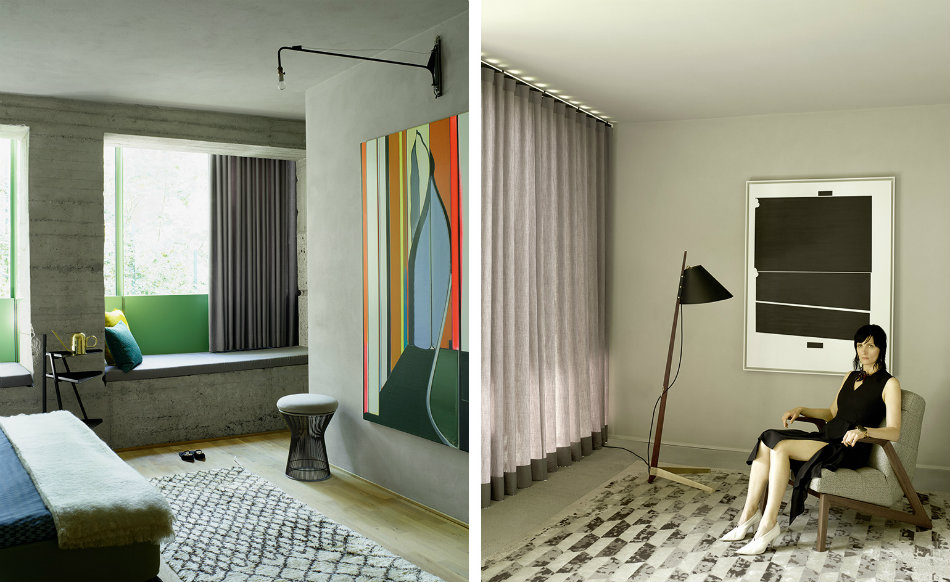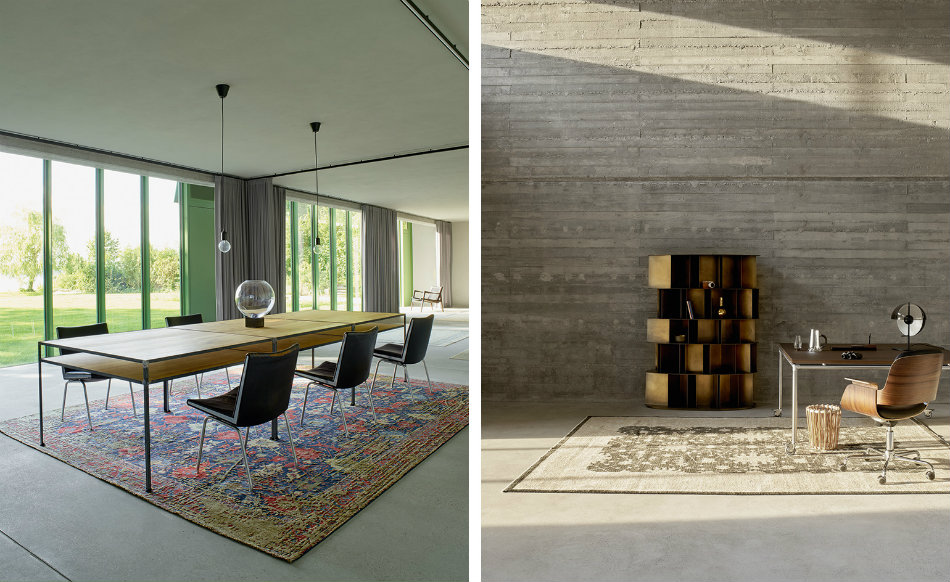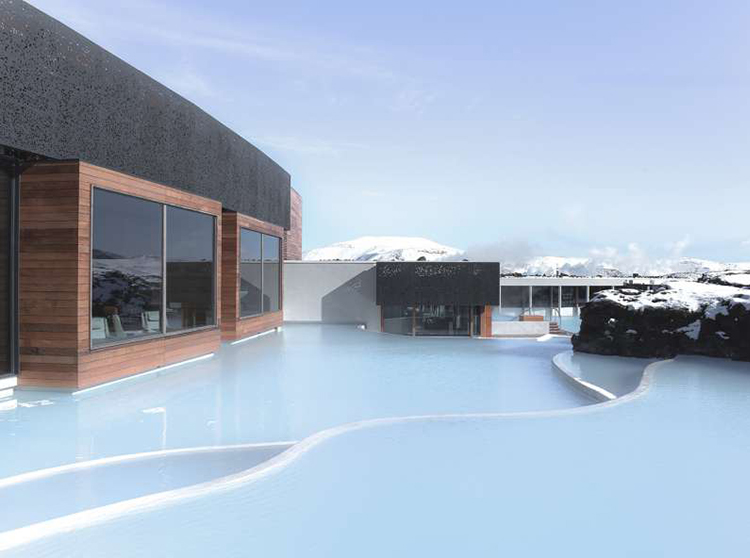The ultimate Berlin dream home is a ‘Haus am See’, a property with waterfront access beside one of the many attractive lakes surrounding the city. The earth is almost pure sand around here, so the shorelines are beach-like and the lakes are clean. Summers on the outskirts of Berlin tend to involve lots of wild swimming, barbecues and messing around in boats. Understandably, such lakeside houses are much in demand and good ones rarely come up for sale, so the chance to do up a waterside house features quite high on the bucket list of any self-respecting Berlin-based architecture practice.
A couple of years ago, David Chipperfield Architects Berlin got the call to refurbish an unusual building for a private client on the banks of the Wannsee in Zehlendorf, one of Berlin’s biggest and most popular bathing and recreation spots. The Wannsee has several yacht clubs and, with the magnificent nearby 1930s Strandbad Wannsee lido, one of the biggest inland stretches of beach in Europe. The lake also has its own lifeguard facility and, until recently, its boathouse was located in a concrete Brutalist building designed in 1970 by the architect Robert Tepez, who also designed the massive SFB TV Centre at Theodor-Heuss-Platz in Charlottenburg. A two-storied terraced volume, the boathouse is set back slightly from the lake below a large 19th-century industrialist’s villa on a gently sloping site complete with its own little harbour.
After buying the villa and its grounds, the owner wished to convert the now empty boathouse into a studio, perhaps with the option of turning it into a publicly accessible museum at a later date – and who better to call when you want a museum refurb than the architects of one of the most stunning museum redesigns in Berlin, if not Europe: the Neues Museum in Mitte.
‘Our design was quite simple and strong,’ explains Alexander Schwarz, the design director responsible for the project. ‘We wanted to highlight the beauty of the 1970s Brutalist architecture of the house, but we also wanted to clarify the relationship between the villa, the boathouse and the beautiful landscape around.’
